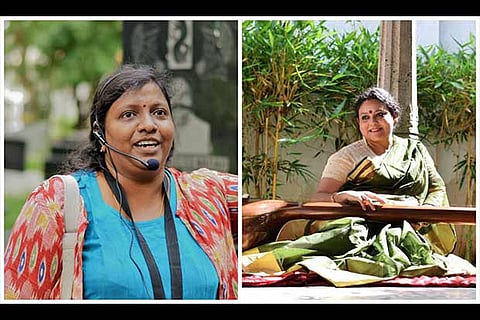

Chennai
A city-based historian, Nivedita Louis, decided to restore it to its former glory through a lecture-demonstration, which aims to explain the history and meaning behind Gujili Ilakkiyam.
Begins Nivedita, “Before the arrival of newspapers and magazines, handbooks that contained Gujili Paatu were printed and given to the public.” Be it a murder, accident or any important event that happened in the city, a song was written about it in the form of a chindu or viruttham.
These were not performed per se, but because the books had to be sold, a few verses were sung to attract attention — more like a marketing strategy. She explains, “People would take these books in a basket, stand in the Gujili Street evening bazar (near Madras Central Station) and sing only a part of the song. If people were attracted to it and gathered around the seller, they were asked if they wanted to know what happened. If the reply was affirmative, they were asked to buy the book to find out more!”
The verses were written in simple Tamil that the common man could understand, with influences from Urdu and English and the tunes were similar to Carnatic music in terms of raga and thala. Nivedita describes, after having read some of these books, “When the writers talk about any incident, it is from first person’s point of view so it shows us the emotions of the layman back then.” It’s no wonder these copies found their way to places outside Madras, like Trichy, Pudukottai, Mayavaram, Nagapattinam and more.
“I came across many books that have been written about Gujili Ilakkiyam, stocked in Connemara library. They’re amazing accounts of the city’s history because they talk about every incident in detail. For example, an accident happened in Mylapore on ‘1915, March 28’ of which there are no records anywhere else except in these old handbooks. Another Gujili Paatu speaks about the Emden attack during WW I. Similarly, we get to know of a rail strike that began on 1913, May 27 by porters and painters, asking for a hike in salary and Rs. 5 increment every year,” she narrates.
“This is the real history that should have been passed on to us. The lessons in our history textbooks are a highly Anglicised version of what the British wanted us to know. So I felt it was my duty to create awareness about this and help revive a lost form of literature.” She adds, “While I explain its meaning and history, Monali Balasubramaniam, a trained classical singer, will be rendering these songs that once rang through the bazar two centuries ago.”
To be part of the lec-dem, visit Press Institute of India, Taramani, on August 25 from 5-6 pm.
Visit news.dtnext.in to explore our interactive epaper!
Download the DT Next app for more exciting features!
Click here for iOS
Click here for Android